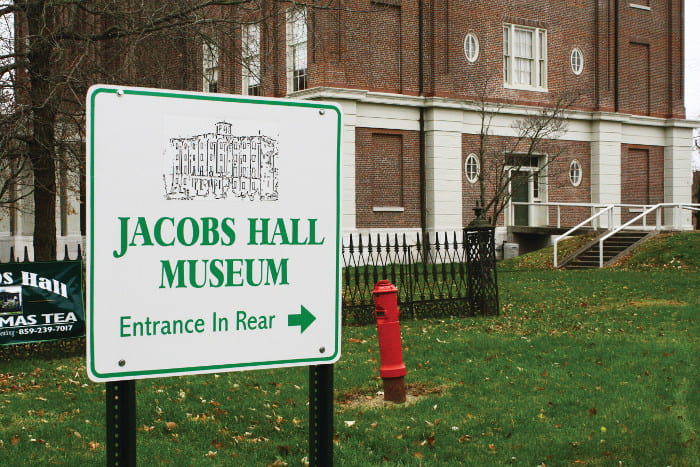By THOMAS SACCENTE – STAFF WRITER
The Deaf culture in America is an undeniably distinct community that has made astonishing contributions to American culture as a whole. Nowhere are these historic accomplishments more apparent than in Danville’s very own Jacobs Hall Museum.
The Jacobs Hall Museum serves as a perfect testament to the rich culture that the town has to offer. Created in 1856, The Jacobs Hall Museum was originally formed as a part of the Kentucky School of the Deaf (KSD) on South Second Street which was the first state-supported deaf school in Kentucky. The school was administered by Centre College in its early years. Centre used Jacobs Hall as the girls’ dormitory until 1962 when other buildings were created in order to serve this same purpose. After that, the structure functioned as both an administrative building and the residence of the school superintendent simultaneously.

In 1966, the building was officially recognized as a national landmark for its historical significance. In 2002, preparations were made to renovate the building so that it could serve as a museum to people who wanted to learn more about all of the contributions that deaf people have made to American culture. The museum is currently operated by the KSD Alumni Association.
The Jacobs Hall Museum has a lot to offer to anyone with an interest in understanding Deaf culture. The tallest building in Danville, the Museum consists of six floors, three of which are available for touring and each of which is dedicated to celebrating a particular facet of Deaf culture in a way so few other places do. The types of exhibits on display vary greatly and include items such as letters, published reports, documents, newspapers, and published reports about the school, its history, and the people who went there. Those looking to explore the Museum more thoroughly are afforded the opportunity to take guided tours of the Museum. A volunteer or employee of the Museum, all of whom are very well trained in American Sign Language, then is able to go into great detail about the historical significance of each room in the Museum and everything contained within which provides a more richly nuanced history of the landmark. In addition, a significant amount of the building’s original furniture is on display and most of the original architecture of the building itself has remained intact, allowing visitors the opportunity to immerse themselves in the historical atmosphere of the building.
However, above all other things, the Museum has made it a goal to educate the general public about how the deaf and their subsequent culture have also helped shape American culture, and in this Museum particularly Kentucky Assistant Director of the Jacobs Hall Museum JoAnn Hamm wants everybody who comes to the Museum to learn what it was like to live at KSD from its inception to present time in order to see how the deaf were accommodated in those days. This will provide them with invaluable insight into Deaf culture and how it developed over the course of history.
“Most of our materials are from the beginning of the school in 1823 until the 1950’s,” Hamm said. “What we have is the history of how the school developed the materials that were used, the way students lived, the way students played, what they did and the important figures in this school’s history.”
This mission helps the Jacobs Hall Museum stand out amongst any other museums in the area. Deaf culture is unique in that it does not feature certain aspects that many consider to be the lynchpins of other cultures. It includes people from a wide variety of backgrounds and therefore does not revolve around any kind of centralized religion, traditions, or authority. According to Gary Crase, who is a teacher of American Sign Language and director for several deaf organizations, in addition to being a Lab/Instrument Technician at Centre College, the people involved in Deaf culture are bound together by their use of visual means to communicate with one another.
“The one thing that almost all Deaf people the world over share is the use of a visual language,” Crase said. “Here in America most all Deaf use ASL [American Sign Language]. ASL defines most Deaf here in America. It is something that is at the heart of their identity.”
It is this rich, exciting culture that the Jacobs Hall Museum displays on a regular basis, and one that has left an undeniable impact on American society.
The Jacobs Hall Museum is a place that is as unique as the culture to which it is dedicated. It allows any and all visitors to immerse themselves in not only the many contributions that Deaf culture has given to the world, but also how it has evolved to where it is today and how the deaf were taught to use their talents to the best of their ability. This is a place that many other small towns do not have and its presence serves as an important facet of Danville’s history.
